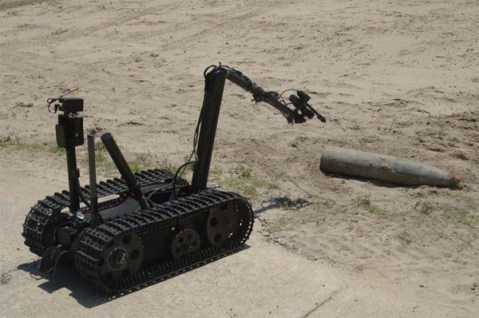 The United States Army plans to develop innovative new robots that can carry out basic instructions without being tele-operated by human operators.
The United States Army plans to develop innovative new robots that can carry out basic instructions without being tele-operated by human operators.
“There is a push toward increased intelligence and autonomy,” Army robotic systems project office manager Jeff Jaczkowski said in a statement.
In the next 18 months, Army officials outlined goals that indicate the robots will be able to clear dangerous zones, take pictures and replay them back to base, turn corners, and will also be able to travel with convoys as they are out on patrol.
The ability to use robots to capture images prior to infantry units arriving could prove to be a vital tool — troops may be able to detect insurgent activity prior to arrival.
Furthermore, robots can be used as devices to remove explosive ordinance devices if troops are unable to diffuse the bombs themselves.
The use of robotics and unmanned technology in Iraq and Afghanistan is expected to increase as the new alternatives prove to be reliable during testing.
The U.S. government is shifting troops towards Afghanistan, where the robots also are expected to help clear out well sheltered caves located in rugged areas difficult for troops to secure quickly. The realistic outline for deployment in Iraq or Afghanistan remains unknown, but the army is expected to move as fast as possible to roll out the upgraded robots.
Editors' Recommendations
- U.S. Navy’s robot submarines could carry out autonomous attacks
- Autonomous robot deliveries are coming to 100 university campuses in the U.S.
- Amazon and Postmates’ delivery robots heading to more sidewalks in the U.S.
- U.S. Navy is working on making its fleet invisible to computerized surveillance
- Parrot to build small surveillance drones for U.S. soldiers on the battlefield


